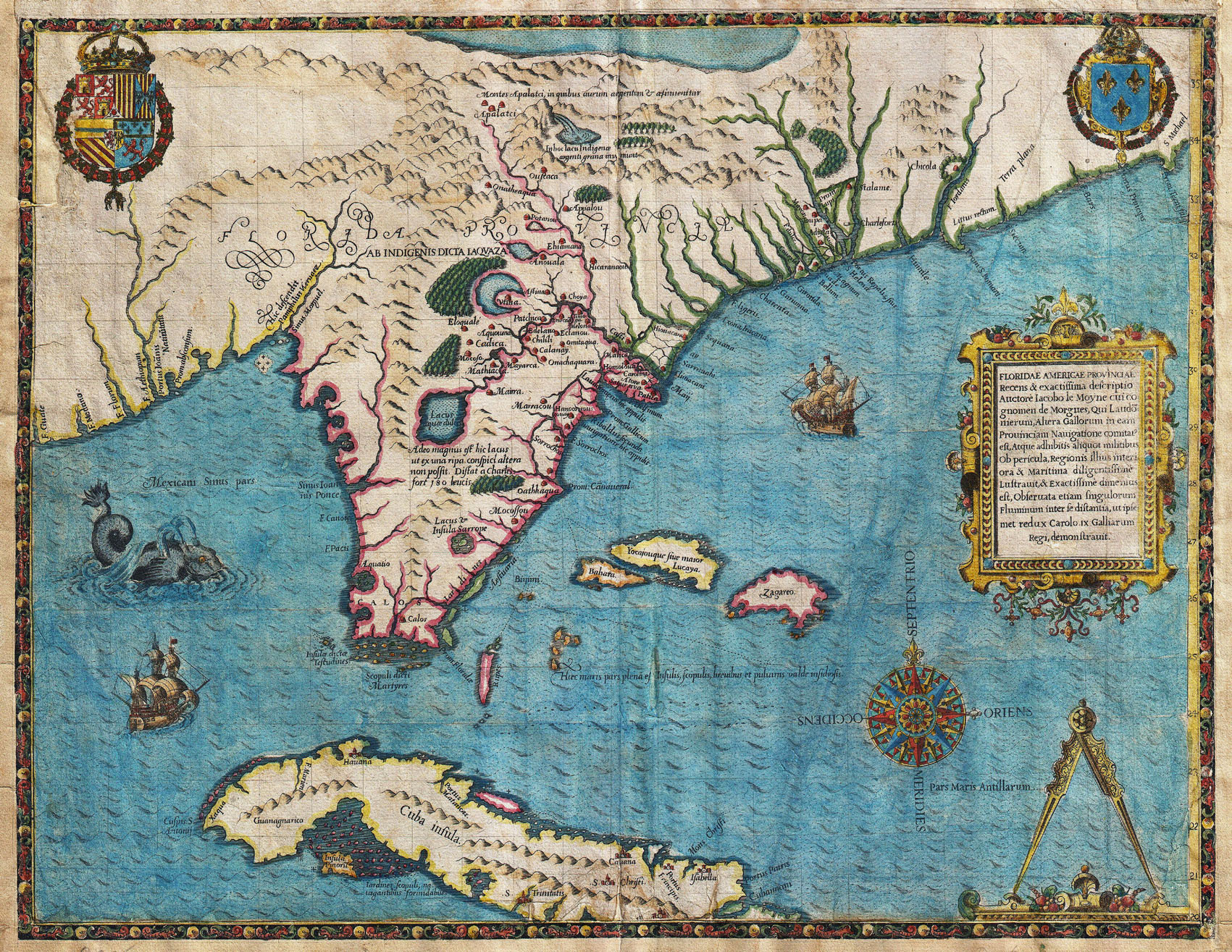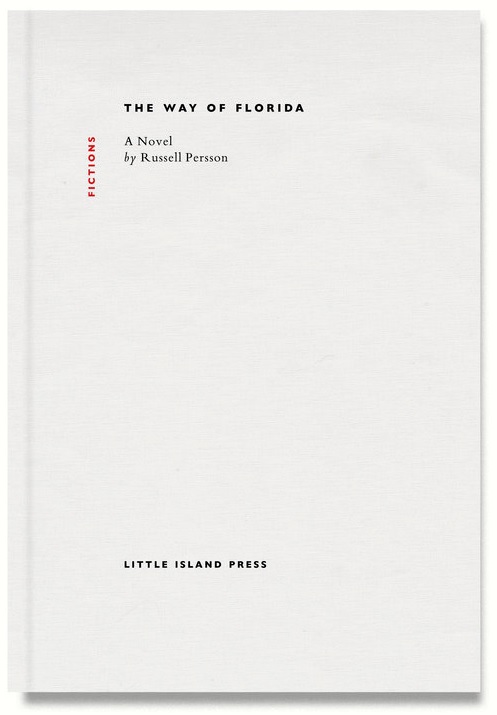Russell Persson’s The Way of Florida is a compact, driving, rhythmical work – a novel, but quite unlike most. The book revisits the ill-fated Narváez expedition of the sixteenth century, which saw a group of some 600 Spanish, Greek, and Portuguese explorers arrive on the coast of Florida intent on establishing preliminary colonial settlements and garrisons. Of the 300 sent inland to explore, only four survived an eight-year ordeal: three minor members of the Spanish nobility and an enslaved Moor. Their story comes down to us via La Relación, the official report compiled by one of the nobles, published in 1542, as well as many other subsequent retellings. Persson’s The Way of Florida is arguably the most linguistically complex, rich, sinuous, and maybe even heroic.
The Way of Florida is published in 2017 by the brilliant Little Island Press. We caught up with Persson to find out a little more about his unique approach to writing.
What drew you to the story of the Narváez expedition? It is a story that has been told a number of times – recently by Laila Lalami in The Moor’s Account. Why do you think this story remains so fascinating and important?
I came to the story for the most part by chance. I had never read the Narrative of Cabeza de Vaca for school or otherwise. A few years ago I was staying at a friend’s house and one night I couldn’t sleep so I picked up one of those Time-Life books and I read a volume from the set on seafarers and some of the stories in that book were not only well written but were absolutely gripping. He then suggested I read the account of the Narvaez expedition, which he’d read in college, and so I did. I was enthralled. As I was reading the Narrative, I kept getting the sense that I could use the general account of the expedition as a kind of armature upon which I could throw my own strange mud. There was so much strangeness and outlandishness in the story, as well as these odd shifts in narrative pace, that it felt like a great room I could use and rebuild with my own odd prose.
What aspects of the story were you looking to draw out that have perhaps been overlooked in the past?
I don’t think I was looking so much to explore any new angles or aspects as much as I felt the story itself, because it is so unbelievable and vibrant, was the perfect setting for my peculiar sentences. There is a sense of struggle and desperation and urgency in the story that I also feel is part of the music of how I write a sentence – part of that roiling and scraping along the earth which is what I try to sing when I’m in that place of sentence-making.
The novel begins with a conjunction, “And…”. For a story about the coming together of two continents/cultures, it feels appropriate. At the same time, beginning a sentence with “And” is generally frowned upon, so there is perhaps a hint of something unnatural or amiss from the very beginning. Could you say a little about the very distinctive grammar and style of the writing?
Beginning the book with a conjunction seemed like a natural thing to do at the time. I have a hard time following any conventions of storytelling or of even, or perhaps especially, sentences that follow the patterns of everyday speech, or that follow the patterns of ordinary grammatical usage. There is something I feel, bodily, that rejects certain constructions and rhythms. If I feel a rhythm or cadence or word choice is something that I’ve heard before, I’ll undermine it and I’ll try to make it my own. Beginning the book with a conjunction was a way to not only begin the story in media res but to let the reader know that we are already in transition, and that we might be in a place where language is following some uncommon rules and paths, and here is an invitation to walk along.
The writing seems in places to privilege sound or rhythm over traditional grammatical rules: was your approach tailored to this particular subject matter? Or is this how you usually work?
I’m more interested in the music of a sentence – the acoustic and idiomatic possibilities – than with storytelling itself. A writer I greatly admire says, and I’m paraphrasing, that she’d do anything to avoid the boredom of a story. I could not agree more, and my response to this is to engage with the music and cadence and the hidden strangeness of language. There are so many ordinary sentences in the world and I feel like it’s my job to undo that, to undermine the reader’s expectations and to create a difference, which, I hope, the reader will come to learn and adapt to.
The result has a kind of strangeness that is not altogether foreign or other (it remains clearly in English) but somehow disorientating. You can get lost inside the sentences. How did you balance that kind of effect with sentences that still remain readable (and often very beautiful)?
I do spend a lot of time revising and I think if I’m honest I’d say for the most part the changes I make are in the interest of clarity. If a reader is to get lost in your work, the writer needs to get lost in that work, and in that place, which feels at times like a spell or some kind of fugue state, it’s possible to get so deeply entranced that I risk falling in a whirlpool and getting held down there where the song becomes incomprehensible. I don’t want to ask anyone to scale a perfectly vertical and polished surface, and so I try to make sure to leave enough handholds. I’m not interested in frustrating a reader, but I know at times the reading might be difficult and might require more patience and perseverance than some other book, so it’s my hope that the reward, the participation in the music and the movement of the reader’s heart, is worth that effort.
The work is presented in quite an unusual way: as short columns of text, almost like concrete poetry. What kind of effect was this designed to have?
In earlier versions of the manuscript it was much more compressed and dense. One reader of an early version referred to it as monolithic. But I resisted at first to undo that density. Then another reader, who I also dearly trust, recommended I try to address the density of the manuscript, which he felt was at times an obstacle to the reader’s engagement. So I began to break up the text. What I recall about that revision was the natural rhythm to walking and breathing that became the arbiter of these new page-breaks. And after breaking up the text and adding that new space, the text seemed to breathe more slowly and became more inviting.
Part of The Learned Pig’s Wolf Crossing editorial season, spring/summer 2017.
Russell Persson’s The Way of Florida is published by Little Island Press.
Image credit: De Bry and Le Moyne Map of Florida and Cuba, 1591, via Sentier International des Appalaches


